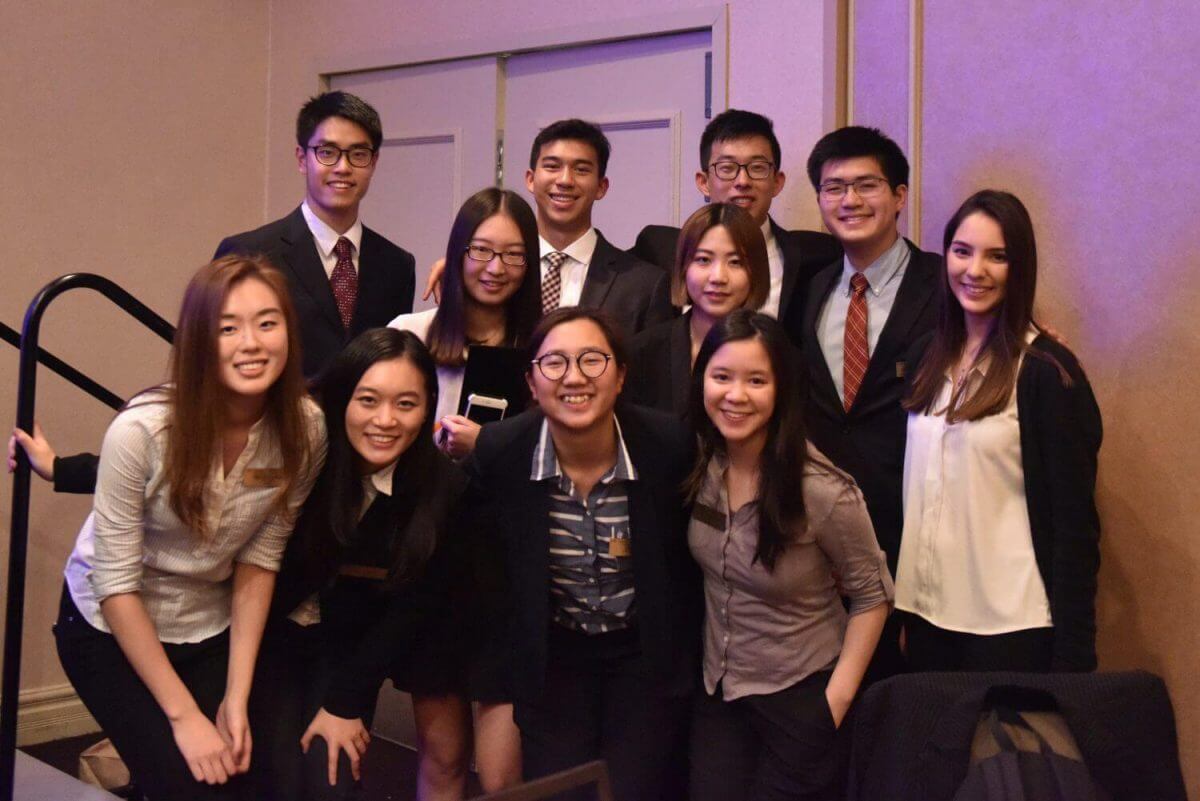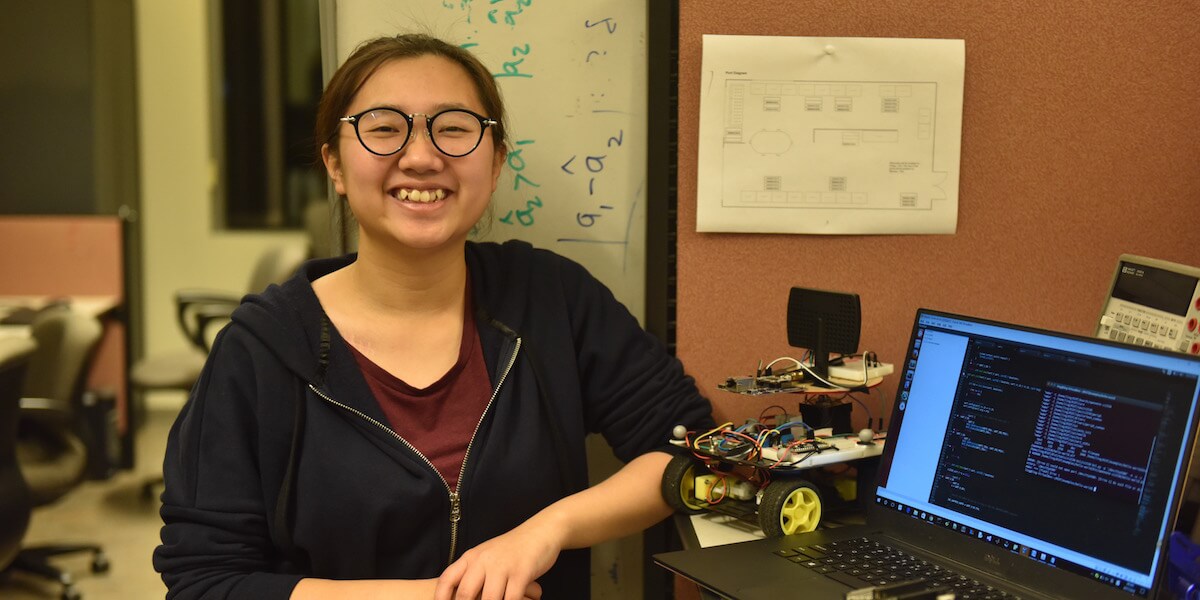This story has also been translated into Mandarin. Read it here!
By Ling Ye
My passion for Engineering started when I was a young girl growing up in Shanghai. In primary school, I joined the robotics club where I wired my first circuit and built my first program on Lego Mindstorms. From then on I was always interested in engineering, but I wasn’t sure which specific area I should go into.
Then, in high school, I had a chance to work with a team on an Internet of Things and Robotics education platform project called Open Intelligent Solution, which was advised by a professor from a local university. I started to love the “little magic” I could do to connect different devices together over the internet – even getting them to move around. More importantly, I was fascinated by how the physical world and virtual world interacted with each other. It was this realization that led me to a focus in Electrical Engineering. To me, Electrical Engineering is the discipline that bridges these two worlds. As those two worlds become more and more intertwined, I felt that this was the place where I would have the most impact on the future.
I wanted to learn in depth about the wireless networks and robotics aspect of Electrical Engineering, and in breadth about other areas as well.
Once I started at USC, I was eager to find research opportunities to dig deeper into my interdisciplinary field of interest in both Internet of Things and Robotics. Luckily, the EE department makes really easy for undergrads to get set up in one of the many labs.
I did some research into professors working in these areas and after an introductory email and short in-person meeting, I started working under Professor Bhaskar Krishnamachari in the USC Autonomous Networks Research Group. I’m part of the team building a robotic networked test bed. Doing research is not as overwhelming as you might fear. This test bed is indeed a large project, but we separate it into small pieces. It normally takes 8-10 hours of my time every week, but it’s been so fun learning and getting hands-on experience.
Prof. Krishnamachari and two PhD students that I work with, Jason and Pradipta create a welcoming environment where I get to learn advanced concepts of networks and control that’s more than I’d get in class alone. They are always there to help and give me guidance, but there are still times that I have to connect dots on my own. That’s the interesting and challenging thing about research: You are constantly learning and exploring new things. I love these “a-ha” moments I have after figuring something out and it motivates me to learn more and be more engaged.
“I’m always keen to engage undergraduate students in the research in my lab because such opportunities shaped my own decision to work in academia years ago. Ling has been helping us design and build a new robotic wireless networks testbed. Her work is a great example of the contributions that a talented and passionate undergraduate students can make.” – Prof. Krishnamachari
Another great thing is that I can apply what I learn in the classroom directly into the project I’m working on. Last semester, when I was learning about Analog-to-Digital-Conversion (ADC) in EE109, we actually found that the RIOT-OS didn’t have ADC implementation built in for the TI openmote board that we were using for the test bed. We needed to take in the ultrasound sensor analog signal, so I got to code this part entirely with what I just learned in the lab. Doing research makes me understand more about what I am learning and how to use the same methodology in actual application.

Ling, front row center, with IEEE E-board at SPAC networking dinner.
Overall, the research experience enables me to go in depth, while joining student organization adds the breadth. Being part of IEEE makes me love Electrical Engineering even more. IEEE is the world’s largest professional association dedicated to advancing technological innovation and excellence for the benefit of humanity, and we have a chapter right here at USC! I’m able to meet and learn from other students that are in different sub-fields, such as signal processing and electrical sciences. I get to collaborate with some of them on cool projects where we bring our different experiences together and create something beyond our individual abilities.
Rundora was born in this way. It’s a hardware device that gives the user synchronous workout music that matches their running pace and heart rate. It involves real-time signal processing and embedded system development. In the process, I learned so much about signal processing from fellow undergrads Yifang and Max, both of whom I met through IEEE. Having a group of friends with different backgrounds in tech gives me a fresh perspective and understanding of the tech world. They make me able to see the bigger picture.
I am really grateful that I can go further within the field I love, while keeping my eyes wide and open at USC. I feel like I can specialize in something without having too narrow of a focus. I am ready to learn more and create more!
Ling Ye is a Sophomore EE student, Undergraduate Researcher at USC Autonomous Networks Research Group, and Corporate Chair of IEEE at USC. She loves songwriting and playing electric guitar.
Published on January 26th, 2017
Last updated on March 30th, 2021



